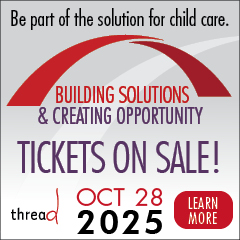Kids on the Run
From fun runs to 5Ks: How to safely incorporate running at every stage of your child’s development
By Jamey Bradbury

Running is a great way for children of any age to stay healthy and active. More than ever before, kids are lacing up shoes and discovering their inner runner – from participating in running programs and clubs to kid-friendly charity races and fun runs.
Kids aren’t little adults, though; at each stage of your child’s development, you’ll need to take precautions to make sure she stays injury-free. Read on as local experts offer insights to help your kids start off on the right foot.
Good for you, inside and out
A 2013 study in the British Journal of Sports Medicine found that kids who spend time doing moderate to vigorous physical activity perform better academically. Roger Sayre, former coach for Fairbanks Youth Track, has seen the positive impact running has on kids’ grades – and attitudes – firsthand.
Kid-friendly running events
KidzRunning is an 8-week program in Anchorage that starts in June. Cost: $100. Contact James Dooley for more info.
For more on Girls on the Run, visit gotrsouthcentralak.org.
KID-FRIENDLY RACES:
Anchorage:
Alaska Heart Run, 5 km,
April 25
Salmon Run, 2 km and 5 km, May 2
Mayor’s Youth Cup, 2 miles, June 20
Big Wild Life 2K, Aug. 15
Kids Zombie Mini, 2.5 km,
Oct. 10
Other locations:
Eagle River Tri, Kids Tri, June 7
Midnight Sun Fun Run, Wasilla, 1 mile and 100 yard dash,
June 13
Ward Lake Fun Run, Ketchikan, 1 mile and 5 km, July 11
Governor’s Cup Kids’ 1-mile, Juneau, July 11
Houston Kids’ Dash, ½ mile and 1 mile, Sept. 19
Kenai River Fun Run, 5 km, Sept. 28
For more races, visit alaskarunningcalendar.com
“Football and soccer can be very coach-centered,” he shares. “Whereas with running, they’re learning self-discipline and focus. It teaches you to say, ‘Here’s my goal; how do I get myself there?’ ”
Even for kids who don’t want to make running their sport of choice, running a few laps can have benefits that go beyond the track.
“Running is something you can do year-round, really,” points out James Dooley, KidzRunning coordinator at Anchorage’s Skinny Raven running store. “You can’t always go to a hockey rink and skate, but you can throw on a pair of shoes and go for a run to stay fit.”
The benefits of running spill over into a child’s other sports too, such as basketball, hockey, swimming or soccer. According to WebMD, athletes who cross train regularly are stronger and experience fewer injuries than those who do not. Sayre adds that running builds endurance for other sports: “If your son runs for part of the year, he’ll last through the game longer.”
Tiny runners: 6 and under
For kids under the age of 6, though, running shouldn’t be about training or building endurance. It should be about fun.
KidzRunning, a club for kids ages 6 to 12, keeps its youngest members engaged by incorporating games. “It’s hard to keep the youngest kids focused,” Dooley explains. “So we’ll play tag or do fun warm-ups, like crab walks and butt kicks.”
Very young children also lack the coordination necessary to keep them safe when distance running; at most, kids under the age of 6 can try short races of a couple hundred yards.
“At that age,” adds Sayre, “how you play isn’t really that important as much as getting out there and doing it.”
Next steps: Ages 7 – 10
By 7 or 8, kids can participate in short runs of about 1 kilometer, gradually working up to family 5-kilometer races where fun is the goal. Kids also can start to establish healthy running habits at this age.
At Girls on the Run, whose youngest members are 8 and 9, coaches lead participants through warm-up routines and post-run stretching, and talk about the importance of staying hydrated.
“As an adult, I very rarely maintain good running habits like warming up properly, cooling down or stretching after a run,” admits Kennis Brady, council director for Girls on the Run, Southcentral Alaska. “But if we can instill those habits in kids when they’re young, they’re more likely to stick with them and stay injury-free as adults.”
Girls on the Run also provides proper gear for girls who don’t have it – and even at this stage, gear is important. Kids need appropriate shoes and socks to avoid shin splints, blisters and other injuries.
Middle distance: Middle-schoolers
“Don’t worry about intervals, don’t worry about pace. Give them a workout that’s not too difficult,” says Sayre of the middle-schoolers he used to work with. Junior runners may be getting more competitive and can start to do drills to improve technique and work on their form. Some middle school coaches have their athletes focus on speed instead of distance at this age so kids can learn how to pace themselves.
But to stay injury-free, pre-teens shouldn’t focus solely on running. They can pair it with other sports that build lateral movement muscles (tennis), strengthen legs (cycling) and improve overall fitness (cross-country skiing or swimming).
“From there, kids might start suggesting things, like, ‘I heard core is important for running, so what can we do for that?’ ” Dooley says. “So I’ll show them how to do planks to build core strength. A lot of times, it’s about waiting for them to ask questions.”
And it’s still about having fun, adds Sayre. “You want to prepare them for the next level, but they should also being saying, ‘Hey, this is fun! It’s not a grind.’ ”
Run for life: High school and beyond
“When they’re in high school, they’re somewhat seasoned,” Sayre continues. “They know what it’s like to line up for a race.”
High school runners become more self-directed, setting their own goals and choosing the distances they prefer to run. But adolescent bodies are still developing, so high-schoolers should avoid going crazy with mileage and speedwork to avoid injury. Continuing to do other forms of exercise, like weight training or plyometrics, can help.
Whatever age your runner is, you can encourage them by being a good role model. Join your kids for a run! You’ll be setting a good example, creating a healthy habit and getting some quality time, too.
“Sometimes running together is the only chance you have to catch up,” says Brady. “When you see kids’ parents running with them, supporting them, it really starts to change the whole family’s physical dynamic.”










